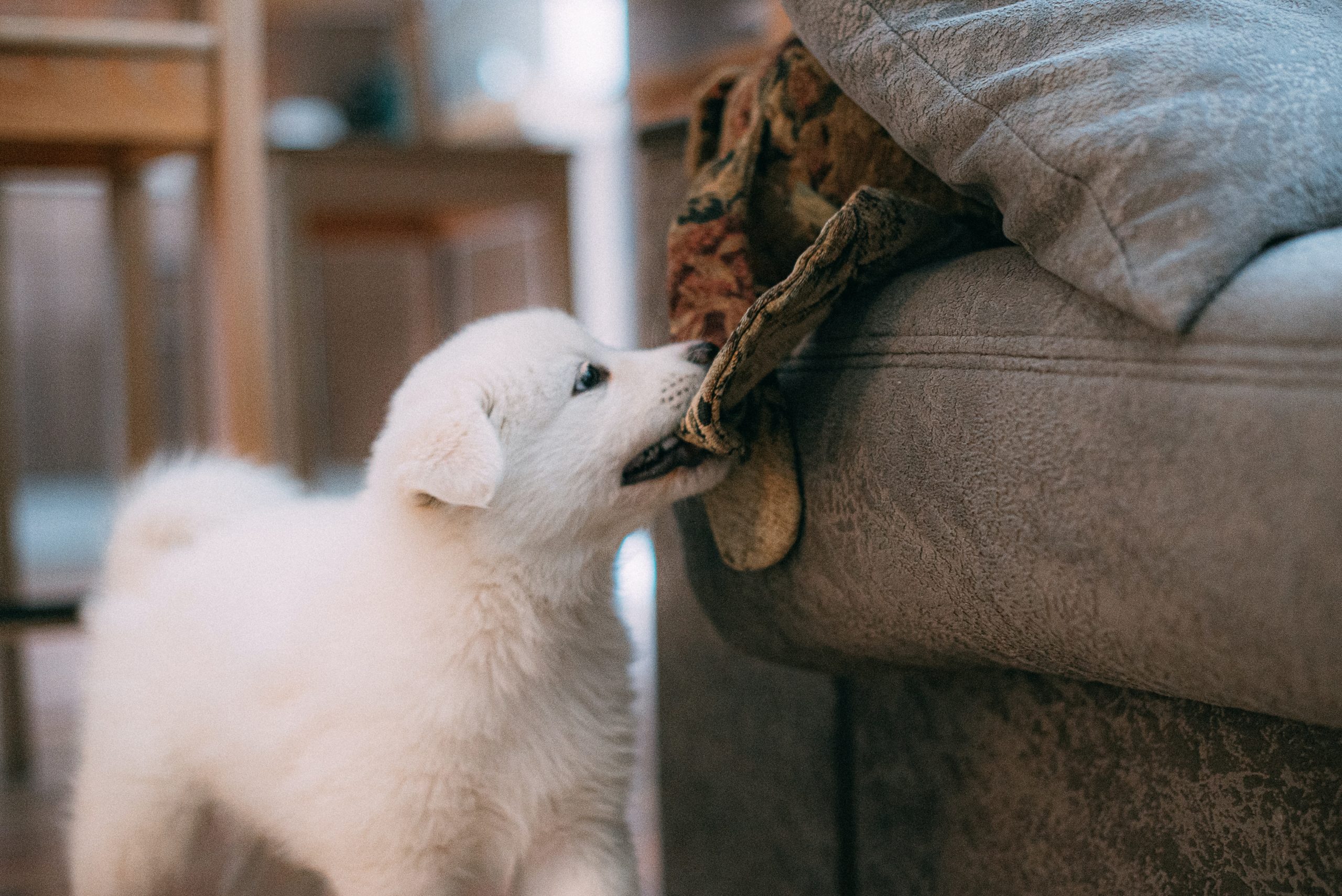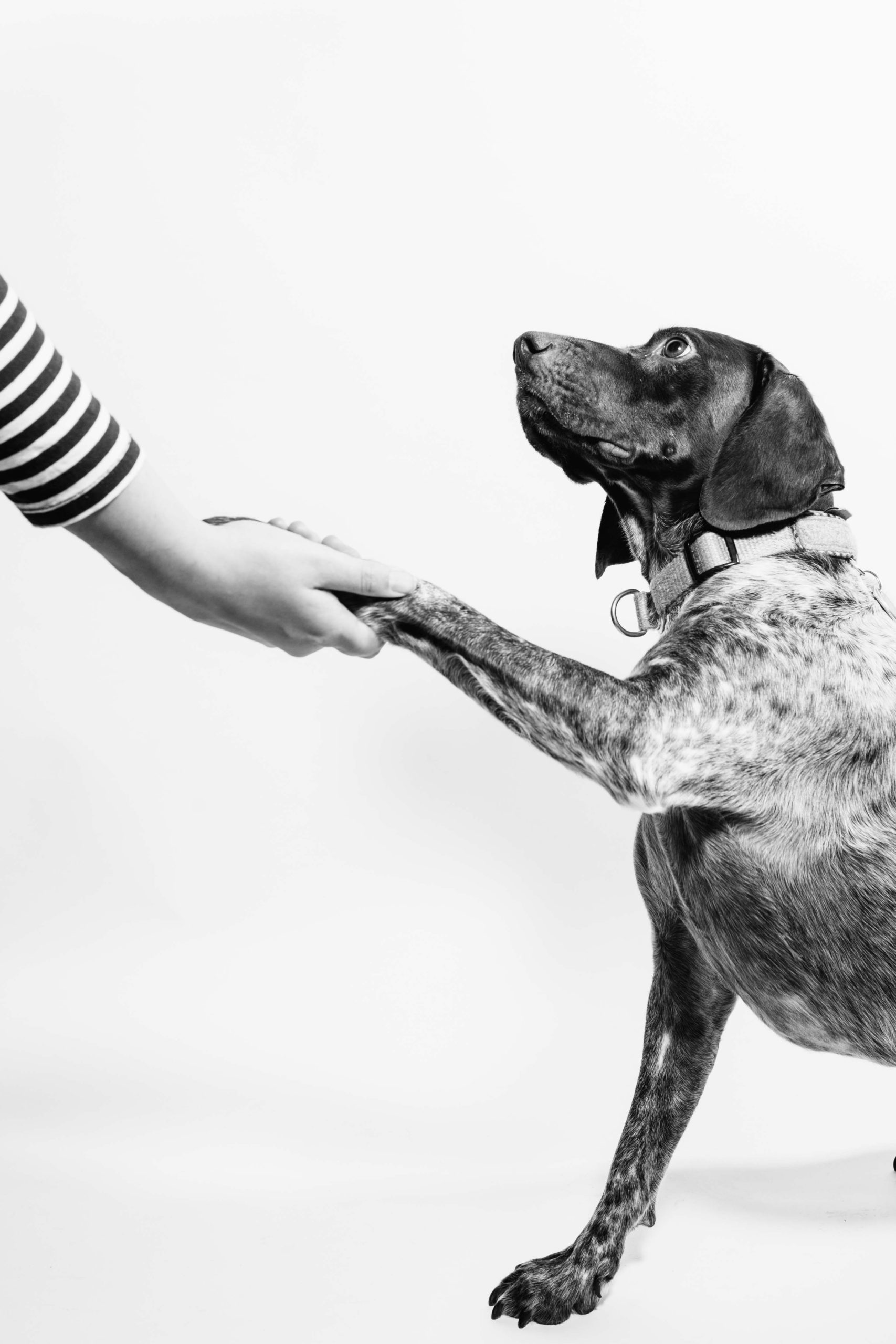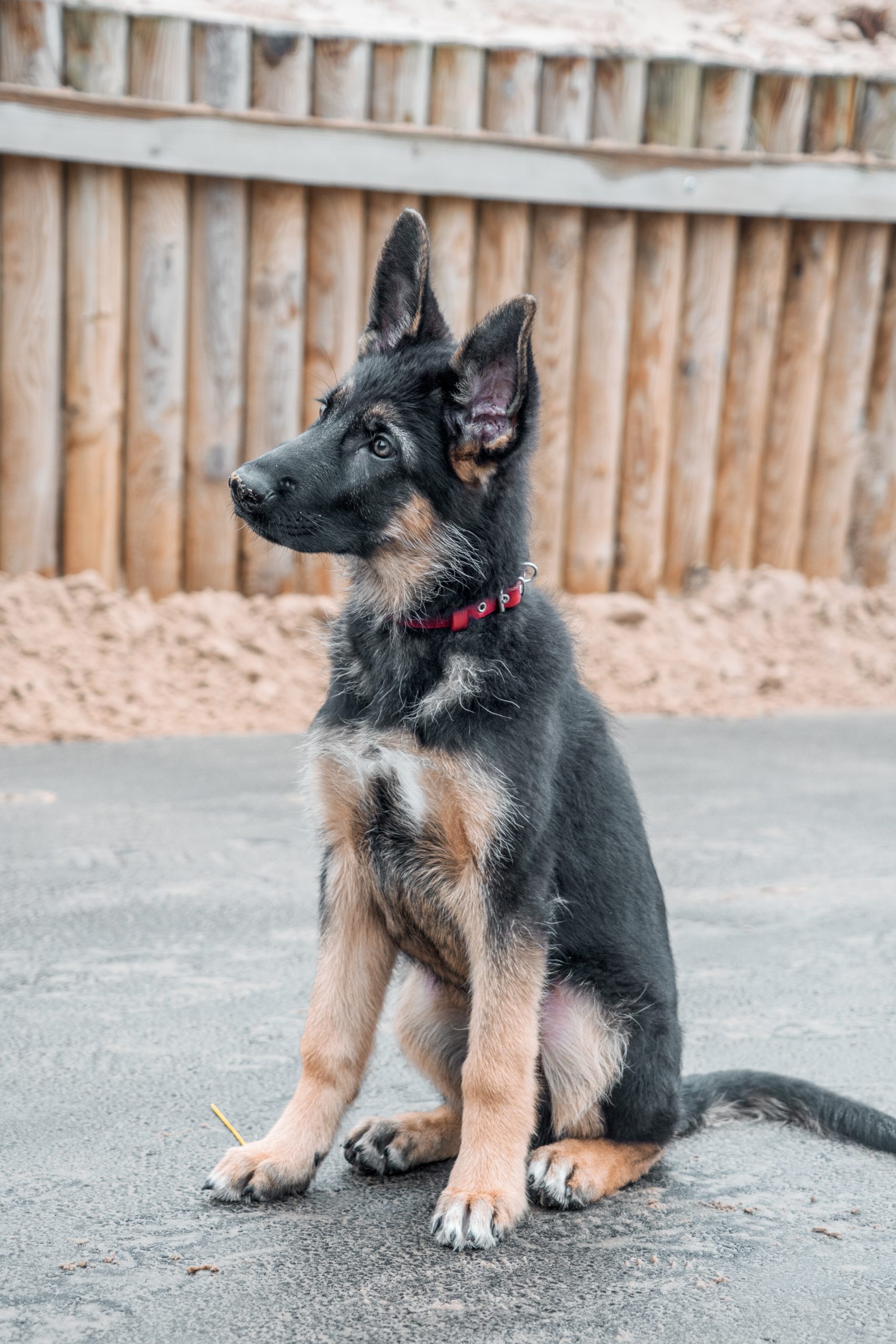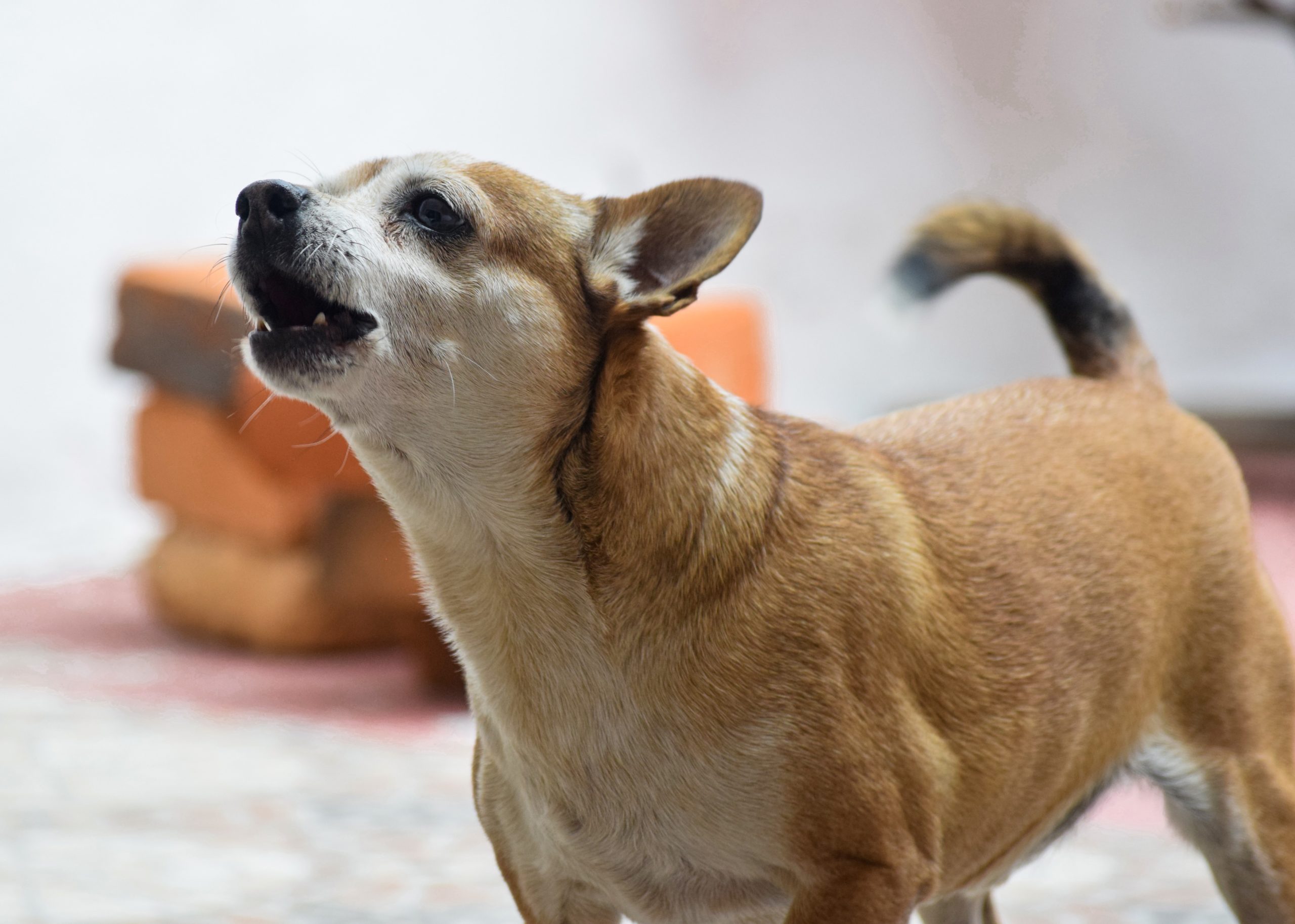Welcoming a new puppy into your home is an exciting and heartwarming experience. However, it also comes with the responsibility of ensuring that your living space is safe and secure for your furry friend.
In this blog post, we’ll explore how to effectively puppy-proof your house by identifying common hazards, implementing practical solutions, and creating a comfortable environment that keeps both you and your pet happy.
Identifying Potential Hazards For Your Puppy
Household chemicals and cleaners should be kept out of reach, as well as electrical cords and outlets that can pose a danger to curious puppies. Additionally, sharp objects and choking hazards such as small toys or pieces of furniture should also be identified and removed from the area.
Household Chemicals And Cleaners
As a puppy owner, it’s crucial to be aware of the household chemicals and cleaners that can pose potential dangers to your furry friend.
Many everyday cleaning products, such as bleach, detergents, and even some air fresheners contain harmful substances that can be toxic or irritating to puppies if ingested or inhaled.
In order to protect your pet from these hazards, you should always store cleaning supplies securely out of reach in cabinets with childproof latches. Additionally, consider switching to pet-safe alternatives for general cleaning purposes around the house.
When using strong chemicals for specific tasks like toilet bowl cleaners or oven degreasers, ensure that the area is well-ventilated and restrict your puppy’s access until all residual traces have been removed and the area is safe again.
Electrical Cords And Outlets
Electrical cords and outlets pose a significant threat to your curious puppy. Puppies are drawn to chew on anything in their path, including electrical cords which can lead to electrocution or burns.
One way to prevent this is by stringing the cords through cord concealers or duct tape them along the floorboards out of reach. You can also move outlets that are within reach higher up on the wall or install childproof covers over them.
It’s important not to overlook small appliances like lamps and phone chargers, as they may seem harmless but still pose a potential hazard for your furry friend.
Sharp Objects And Choking Hazards
Puppies love to chew on everything in sight, and this can lead them to dangerous objects like sharp knives, needles, or small toys that can cause choking.
Pet owners must ensure that all sharp objects are kept out of reach of curious puppies. Knives should be stored away in drawers or knife blocks while sewing supplies must also be kept securely locked.
It’s important not only to remove these items but also to clean up any broken glass or plastic that could pose a choking hazard for your furry friend.
Toxic Houseplants And Substances
Some houseplants and substances can be harmful or even deadly to puppies. Make sure all your plants are out of reach, or better yet, opt for non-toxic varieties like spider plants or bamboo palm.
Common household items like chocolate, grapes, and nicotine are also toxic to dogs and should be kept safely locked away. Know the symptoms of poisoning which include vomiting, diarrhea, difficulty breathing, and seizures and get medical help immediately if you suspect ingestion.
Additionally store chemicals such as pesticides and cleaning products in a secure cabinet with locks.
Steps For Puppy-Proofing Your Home
Secure your home and protect your puppy by keeping hazardous items out of reach, using safety covers for electrical outlets and cords, choosing safe toys and chew items, securing windows and doors, and installing secure fencing and gates.
Keeping Hazardous Items Out Of Reach
One of the most important steps in puppy-proofing your home is keeping hazardous items out of reach. This includes household cleaners, medications, and any other chemicals that could be potentially harmful to your pup.
Make sure to store these items on high shelves or in locked cabinets where your curious puppy can’t access them.
Other items to keep out of reach are electrical cords and outlets. Puppies love to chew, so make sure all cords are secured or moved out of reach. You can also use cord concealers or coverings for added safety.
Using Safety Covers For Electrical Outlets And Cords
To prevent curious puppies from biting and chewing on electrical cords, it’s essential to use safety covers for all outlets and cords. These covers are available in a variety of styles, ranging from simple plastic plugs to larger locking mechanisms that can be attached directly to the outlet.
In addition, consider using cord concealers or routing cords through furniture where possible. This helps keep cords out of reach and makes it less tempting for puppies to play with them.
Remember that even unplugged cords should be secured as puppies may still attempt to chew on them.
Choosing Safe Toys And Chew Items
When it comes to puppy-proofing your home, choosing safe toys and chew items is crucial. Puppies have a natural urge to chew, and if they don’t have appropriate outlets for this behavior, they may turn to chewing on unsafe objects in your home.
Look for toys that are specifically designed for puppies and made from durable materials like rubber or nylon.
It’s also important to choose appropriate chew items such as rawhide bones or dental chews that promote healthy teeth and gums while satisfying their need to chew.
Avoid giving them cooked bones which can splinter into sharp pieces that can injure their mouth or digestive system.
Securing Windows And Doors
It’s crucial to secure windows and doors to keep your curious puppy safe. Install sturdy screens on all windows and sliding glass doors, ensuring they are securely fastened and in good repair to prevent accidents.
For added security, consider adding locking mechanisms or childproof latches around the house to keep your pup from opening doors or windows accidentally.
Remember that while it’s important to secure your home for your puppy’s safety, you don’t have to sacrifice aesthetics in doing so.
Choose decorative pet gates where possible and sweep toys into stylish storage containers when not in use so they add a fun touch rather than detracting from the overall appearance of your home.
Installing Secure Fencing And Gates
Puppies are naturally curious and love to explore their surroundings, which can be both adorable and worrisome for owners. To ensure that your puppy does not wander beyond the safety of your home, it is vital to install secure fencing and gates around your property.
This prevents any potential hazards such as roads or wild animals from harming your furry friend. Investing in high-quality fencing materials such as wrought iron or vinyl will ensure durability against chewing and claws.
It’s also important to check regularly for gaps in fences or damage caused by digging attempts by puppies who want freedom outside the house.
Additionally, ensuring the aesthetic appeal doesn’t reduce in this process may include adding plants, and mesh wall decor where possible-considering these options should keep both puppies active and offer interesting sights while keeping them safe at all times.
Creating A Safe And Comfortable Living Space For Your Puppy
Provide a cozy living space for your puppy with designated bedding, temperature control, and access to clean water and food.
Providing A Designated Area For Your Puppy
Your puppy needs a designated space in your home where they feel safe and comfortable. This area can be their crate, bed, or playpen. Make sure the space is big enough for them to move around comfortably but not too big that they will see it as an opportunity to chew on things.
It’s important to make this space cozy and inviting by adding comfortable bedding, toys, and perhaps even some background music or white noise. Keep your puppy’s food and water close by so they have easy access when needed.
Using Comfortable Bedding And Appropriate Temperature Control
Your puppy’s sleeping area should be comfortable and safe. Choose a bed that is the right size for your pup and provides ample cushioning to support their growing bones and joints.
Additionally, make sure that you provide appropriate temperature control in the room where your puppy sleeps. This means ensuring that the room isn’t too hot or cold, but rather at a comfortable temperature range between 65°F-75°F (18°C-24°C).
It’s also important to regularly clean your puppy’s bedding since puppies can be messy and carry germs. Use pet-friendly detergents to wash any fabric items such as blankets and bedding, soaps with toxic chemicals can cause skin irritation to your furry friend.
Ensuring Access To Clean Water And Food
Providing your puppy with access to clean water and food is essential for their health and well-being. Make sure to have a designated area for your puppy’s bowls, away from any potential hazards.
When choosing food for your puppy, opt for high-quality brands specifically formulated for puppies. Avoid feeding them table scraps or human food, which can upset their stomachs and cause obesity.
Anecdotal evidence suggests that some puppies enjoy playing in their water bowl or knocking over their food dish.
By ensuring easy access to clean water and healthy food options, you’ll keep your furry friend happy and healthy while preventing potential issues like dehydration or malnutrition.
Regularly Cleaning Your Puppy’s Living Space
Keeping your puppy’s living space clean is an essential part of maintaining a safe and healthy environment for them. Your puppy will inevitably make messes, so it’s important to have cleaning supplies on hand to quickly address any accidents.
Regularly vacuuming or sweeping the floors will help eliminate potential choking hazards such as small objects that your pup may try to chew on or swallow.
Additionally, be sure to wipe down any surfaces with non-toxic cleaners that won’t harm your furry friend.
Did you know that puppies are more prone to catching diseases from dirty environments? According to the American Veterinary Medical Association (AVMA), proper sanitation is crucial in preventing various illnesses from spreading among pets.
For this reason, it’s important to regularly wash their bedding and toys with pet-safe products and keep laundry hampers out of reach.
Additional Tips For Puppy-Proofing Your Home
– Use furniture covers to protect against puppy accidents and destructive behavior.
– Block off any gaps in or under furniture where a puppy could get stuck.
– Crate train your puppy for when you’re not at home.
– Keep laundry and other small items out of reach to prevent choking hazards.
– Consider using pet-friendly rugs and carpets that are easy to clean and maintain.
Keeping Trash Cans Secure
Dogs love to explore their surroundings with their noses and mouths, which often leads them to the kitchen trash can. Discarded food, wrappers, and other items found in the trash can pose a significant risk to your puppy’s health.
To prevent this from happening, invest in a dog-proof trash can that will keep curious pups out of harm’s way.
It’s also important to avoid feeding your puppy scraps from the trash or off of human plates as this encourages bad behavior and may lead to gastrointestinal issues. Keep in mind that some foods like chocolate, grapes, onions, and avocados are toxic to dogs even in small amounts.
Covering Sharp Edges And Corners
Puppies are curious creatures and love to explore their surroundings by sniffing, chewing, and licking everything they can get their paws on. With this in mind, it’s essential to cover sharp edges and corners in your home to prevent accidents that could harm your furry friend.
There are many ways you can do this: you can use foam edge guards or corner protectors to cushion the sharpness of edges on tables or countertops.
You also need to think about other objects with sharper edges like TV stands or bookshelves and secure them safely away from the puppies’ reach. Keeping such items within closed spaces will prevent them from getting hurt while exploring their new environment.
Blocking Off Stairwells And Restricting Access To Certain Rooms
Puppies are curious creatures that may wander into places they shouldn’t. Blocking off stairwells and restricting access to certain rooms can go a long way in keeping your furry friend safe.
Use pet gates or other barriers to keep your puppy out of areas with potential hazards, such as the kitchen, laundry room, or storage closet where cleaning supplies are kept.
According to important facts about pet safety in homes, falls are a common cause of injury among puppies, so it’s essential to secure all openings leading to staircases. Also, make sure windows on the upper floors have sturdy screens securely fastened in place.
Choosing Durable And Pet-Friendly Furniture
When it comes to puppy-proofing your home, choosing durable and pet-friendly furniture is key. Puppies love to chew and play, so opting for sturdy materials like leather, microfiber, or tightly woven fabrics can help prevent damage.
Additionally, consider investing in protective covers for furniture legs or corners that may be prone to chewing. It’s also important to choose furniture that doesn’t have small gaps or spaces where puppies could get stuck.
Conclusion
Remember, keeping your puppy safe is a top priority. By identifying potential hazards and taking steps to puppy-proof your home, you can create a comfortable living space for your furry friend while also preventing destructive behavior and accidents.
Use safety covers for electrical outlets and cords, choose appropriate chew toys and secure fencing, provide clean water and food, use childproof latches to keep chemicals out of reach, close off staircases, and restrict access to certain rooms.
FAQs:
1. What are some common hazards that puppies can encounter in a home and how can they be prevented?
Common hazards for puppies include loose electrical cords, toxic plants, chemicals such as cleaning agents or pesticides, and small objects that could be swallowed. To prevent these risks from causing harm to your puppy, it is important to secure cords or keep them out of reach altogether, remove any potentially toxic plants from your home environment, store chemicals securely in cabinets or closets behind closed doors and supervise your puppy when he/she is playing with any toys to ensure nothing hazardous is within reach.
2. How should furniture placement be approached when setting up a safe space for a new puppy?
Furniture placement should be carefully considered when bringing a new puppy into the home. This involves securing large pieces of furniture against walls so they cannot tip over onto the dog if he/she bumps into them. Additionally – stairs should also have proper handrails installed if possible to reduce the risk of accidents on steep inclines while indoor gates placed at key locations across the house will help create designated play areas where distractions won’t result in unwanted mischief (i.e., chewing on shoes).
3. Are there certain types of materials that may pose more dangers than others to young dogs?
Dogs can have allergies/sensitivities towards different fabrics/materials just like humans do so you need to assess whether the material poses harm based upon your pup’s behavior around these items; this includes avoiding small choke-hazards toys which could become lodged in their throat – especially during teething periods.
4. Should I crate-train my puppy? If so why might this benefit both me and my pet?
Crate training has many benefits both for pets & owners alike including improved safety inside & outside the house, elimination problems (like potty training), separation anxiety issues as well as providing peace-of-mind knowing that the pooch’/kitten isn’t getting into mischief while unsupervised. When properly introduced over time with patience and love, most dogs come to see these crates as their own personal space/sanctuary where they can relax when feeling overwhelmed or uncertain.



